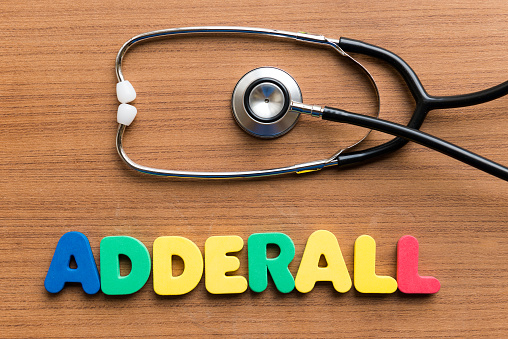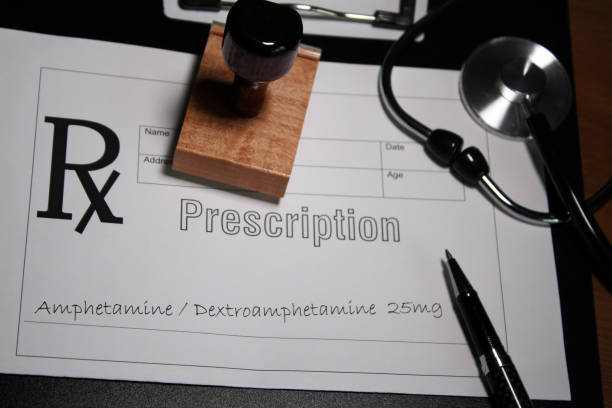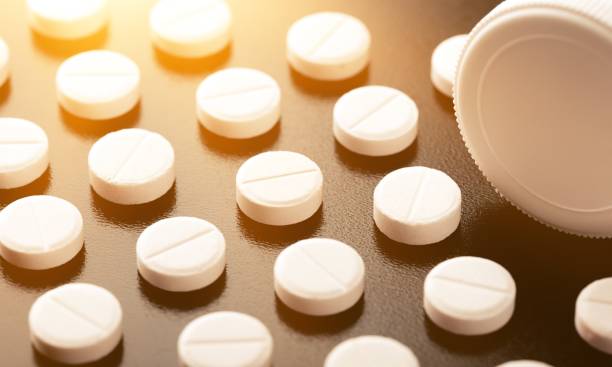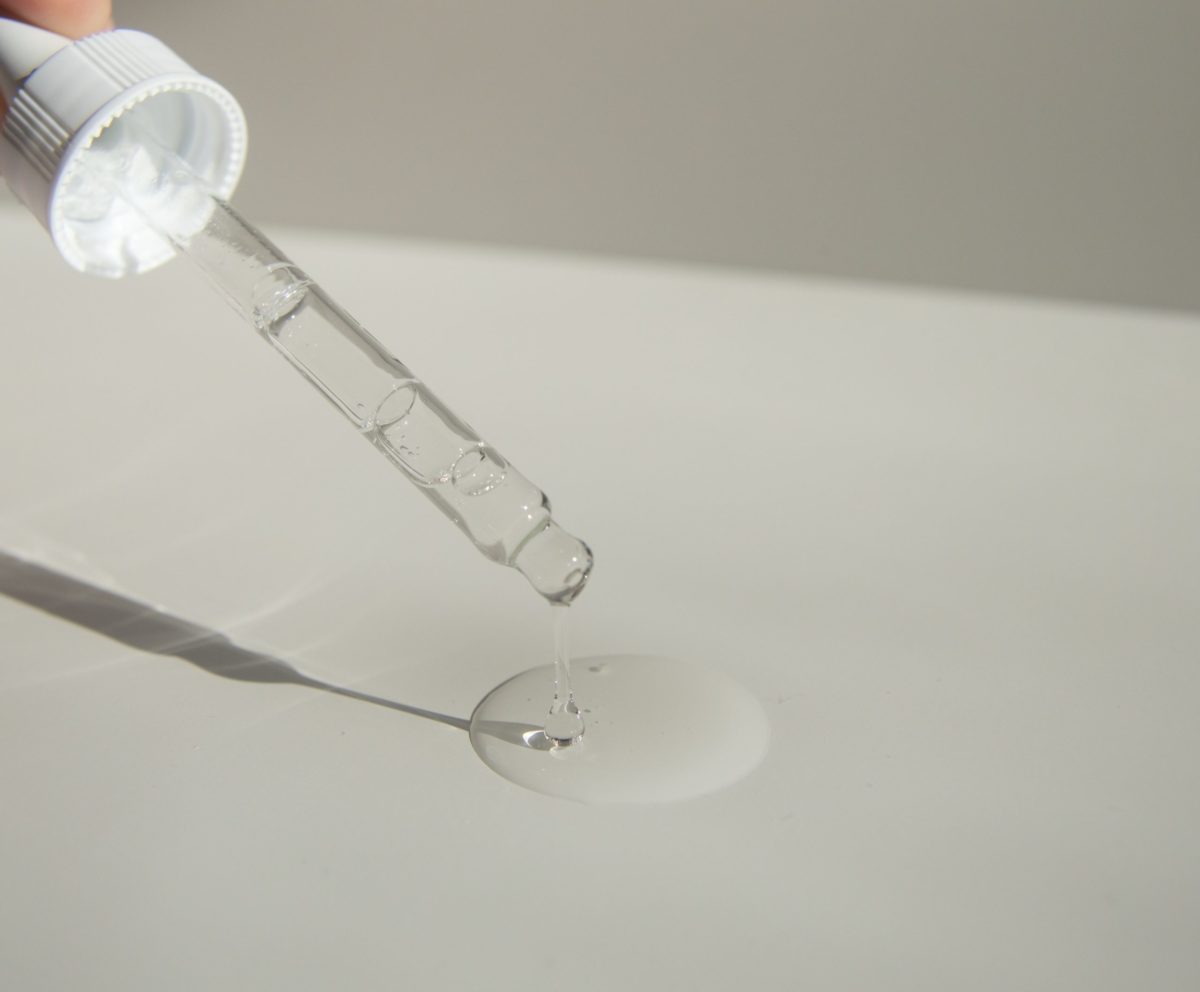Adderall is a stimulant medication that users often misuse. Depending on the test you use, Adderall can stay in your system for up to 96 hours after your last usage. After the last usage, Adderall remains detectable in the following bodily fluids: blood for a maximum of 46 hours, saliva for 20 to 50 hours, and hair for at least three months.
Urine pH, bodyweight, frequency of usage, dosage, age, and time since last use might affect how long it can be detected. Despite being a legitimate drug, users often misuse Adderall.
Misuse may result in addiction, overdose, and serious negative consequences, including cardiovascular disease, unhealthful weight loss, and indications of psychosis. Various factors affect how long Adderall stays in your system, and let’s discuss the details.

How Does Adderall Function?
Although this activity of Adderall may appear counterintuitive, it works by stimulating the central nervous system. There is speculation that people with ADHD have low amounts of dopamine in the frontal lobes of their brains. Sustain the dopamine-induced rush of pleasure in the prefrontal brain, which may lead people to seek fresh experiences more often.
As a result, people could act hastily, chase after thrills excessively, or get easily distracted. Adderall increases dopamine levels in the frontal lobes by stimulating the central nervous system.
The decreased demand for stimulation may help those with ADHD focus and pay attention better. ADHD is often treated with a multifaceted approach that includes medication, behavioral therapy, information, organizational assistance, and alterations to the patient’s daily routine.
How Long Does Adderall Stay In Your System?
The duration of time it takes for half of Adderall dosage to flush out of the body is brief. Dextroamphetamine, the primary ingredient in Adderall, has a half-life of around ten hours in adults, Eleven hours in adolescents between the ages of 13 and 17 who weigh under 166 pounds, and 9 hours in kids between the ages of 6 and 12.
One to two days after the last usage, urine tests detect Amphetamine. How Long will Adderall remain in your blood? Blood tests may also reveal the presence of Adderall. According to a Food and Drug Administration study, an immediate-release Adderall pill generates peak plasma concentrations around three hours after the last usage.
The maximum plasma concentration of 20 milligrams of Adderall, an extended-release pill, can take roughly six hours after intake, according to the journal Molecular Psychiatry research. How much time does Adderall stay in urine? Depending on how much of the medication you consume, there is a window for finding Adderall in urine.
On average, two to four days after the last usage, a urine test can detect Adderall. However, Adderall may remain in urine for up to a week with frequent use and other amphetamines. How much time does Adderall stay in your saliva?
Five to ten minutes after the last usage and up to 72 hours after that, a saliva drug screen may identify Adderall. However, saliva tests may get contaminated if you smoke or consume other chemicals.

What May Have An Impact On How Long It Remains In Your Body?
The rate at which each person’s body metabolizes or breaks down and eliminates Adderall varies, and several variables might influence how long Adderall remains in your body.
- Physical Composition
The amount of time Adderall remains in your system depends on your body composition, including your height, general weight, and body fat percentage. This is partly because bigger individuals often need greater medicine dosages, which causes the drug to take longer to exit the body.
There is some evidence, meanwhile, that those who weigh more or have additional body fat may flush out medicines like Adderall, which are processed by a specific liver route, from their bodies more quickly after taking into account the dosage based on body weight.
- Metabolism
Everybody’s liver contains enzymes that metabolize or break down medicines like Adderall. Everything from your level of exercise to your gender to the additional drugs you take might impact your metabolism rate. Your metabolism influences the time a medicine remains in your body; the quicker it is broken down, the quicker it will get out of your system.
- Dosage
The dosages of Adderall range from 5 mg to 30 mg in tablet or pill form. The longer it takes for your body to metabolize Adderall completely, the larger the amount you take, and higher dosages will thus linger in your system for longer.
The two types of Adderall—immediate and extended-release—dissolve in the body at different rates, which may impact how long the drug remains in your system.
- Age
The time it takes for drugs to exit your system might increase with age, and various causes exist. As you become older, your liver is smaller, so it can take longer to completely break down Adderall.
With aging, urine production also declines. Age-related illnesses like heart disease may also cause a decline in kidney function. Both of these things may lengthen the time drugs remain in your body. As you age, your body changes, which may affect how quickly your body eliminates and breaks down drugs.
- Organ Performance
The liver and kidneys break down Adderall via the digestive system. It could take longer for Adderall to exit your body if any of these functions or systems are not working correctly.
Can One Get Dependent On Adderall?
When you use more than medical recommendations, Adderall may become addictive. Dextroamphetamine and Amphetamine are both components of the pharmaceutical drug Adderall.
The FDA has given its blessing for its use in treating narcolepsy and attention deficit hyperactivity disorder (ADHD). Adderall stimulates the brain and nerve system. In the correct amount, though, it may help those with ADHD settle down and concentrate. In some cases, people who use Adderall report that the drug eventually stops alleviating their symptoms.
You may feel that you need to increase your dosage to get the drug’s full impact. Those seeking a euphoric “high” may deliberately consume huge quantities of Adderall. However, Adderall may be fatal if you use it incorrectly or excessively.
This drug has been linked to withdrawal symptoms, cardiovascular complications, and sudden death. See a doctor if you have a problem with Adderall addiction or dependence. They can advise you on what to do next, including how to get therapy.

Why Do People Get Dependent On Adderall?
Usually, the lowest safe dosage of Adderall prescribed by a doctor is all you need. Use as prescribed, and the potential for addiction and dependence is minimal. The normal dose of Adderall a doctor prescribes is between 5 and 60 mg, and the starting dosage for most adolescents is 10 mg daily.
Then, if necessary, their doctor may gradually raise the dosage until the ADHD or narcolepsy symptoms are under control.
It is possible to develop a dependence on Adderall if the user takes more than their prescription dosage, takes Adderall for longer periods than prescribed, or takes Adderall more often than allowed. Adderall’s stimulating effects are sought out by certain persons who deliberately abuse the drug.
One possible usage is to assist them in remaining up all night and studying. Adderall comes in tablet form and requires a prescription. Some individuals choose to take it by snorting it or injecting it to maximize its effects. Adderall is a Schedule II restricted drug, which the federal government heavily regulates due to the significant potential for abuse.
Who Is Most Likely To Develop Dependency On Adderall?
Adderall addiction mostly affects teenagers and young adults.However, adderall can lead to side effects and in such situations CBD can help. Since, CBD is a natural cannabinoid and it doesn’t hold any adverse effects. Ensure to use the best CBD brands to have a safer consumption of such products. A dependency on Adderall is a concern for everyone who takes the drug.
- Students \ Athletes
- Patients with eating disorders, including anorexia and those on a weight-loss diet
- Workers in high-stress professions
- Addicts and alcoholics
Several drugs may have negative interactions with Adderall. The following drugs increase your chance of becoming addicted to Adderall:
- Drugs for pain, depression, and congestion
- Antacids
- Treatments for epilepsy
- Thinners for the blood
- Medicine for high blood pressure
- Lithium
How Do You Know If You Have An Adderall Problem?
Misusers of Adderall may experience exhilaration. Sooner or later, people realize they need to increase their dosage to get the best effects. They may experience higher anxiety and irritability when the effects of Adderall begin to wear off. Potentially, they’ll be in a low mood.
A person who abuses Adderall is more prone to engage in “drug-seeking” behaviors. Strategies for obtaining Adderall range from spending a lot of time and money on it to ignoring real life by being distant and secretive and “doctor shopping” or trying to fill Adderall prescriptions at many pharmacies.
Those who abuse Adderall by changing the dosage, smashing tablets, or snorting them show a marked decline in personal hygiene.The physical signs of withdrawal or an “Adderall crash” often begin as the effects of the last dosage of Adderall wear off. Some of the potential adverse effects of stopping Adderall use are:
- Restlessness
- Insomnia
- Shedding pounds
- Raised pulse rate
- Headaches, nausea, vomiting, dizziness, anxiety attacks
- Hazy perception
- Hypertensive crisis
- Lack of saliva due to excessive worry
- Deliberation of ending one’s own life
- Depression
Tolerance develops quickly when users abuse Adderall, implying that they will need more dosing for the same outcome. An overdose may occur as a result of this. Some potential Adderall overdose symptoms include:
How Do Doctors Identify Someone Who Has An Adderall Dependency?
See a doctor if you develop a tolerance to Adderall and require greater dosages or if you get severe withdrawal symptoms after you stop taking the drug. Your doctor’s first order of business during your visit will be to collect your medical history.
You might expect questions about your Adderall use, including how frequently and much you take. The meds you’re currently taking will also interest your doctor. All natural and synthetic vitamins, minerals, and herbal supplements count. Your doctor will likely also ask you how you feel once the Adderall wears off.
You could also check your vitals, such as your blood pressure and heart rate. Your doctor would likely use the most recent edition of the Diagnostic and Statistical Manual of Mental Disorders (DSM) to establish a formal diagnosis.
If your doctor suspects you have an Adderall dependency, they may suggest detox or rehabilitation services.In such cases, you can opt for CBD gummies, a plant based goodness that not only offers you therapeutic benefits but also helps you in feeling calm and relaxed. There is no medication available to treat addiction to Adderall. Instead, detoxification under medical supervision is the goal of therapy. Stimulant withdrawal, especially from drugs like Adderall, may cause physical distress.
Depending on the severity of your condition, your doctor may recommend that you join an inpatient or outpatient detox and rehabilitation program. Inpatient treatment centers include medical staff trained to ease withdrawal symptoms and facilitate detox.
It’s not a good idea to suddenly stop taking Adderall. Your doctor will gradually reduce your dose while monitoring you as a substitute. The term for this is tapering. Generally speaking, the following are the processes involved in treating an Adderall addiction:
- Join a treatment center or detox facility that offers supervision throughout the process.
- Seek professional medical advice and testing.
- The doctor tapers Adderall down gradually under physician supervision.
- Handle withdrawal symptoms with care.
- Participate in a psycho- or behavioral-based treatment program.
- Create a strategy for follow-up care. Among these options is regular attendance at individual and group psychotherapy sessions.
- The treatment center’s doctors and therapists will provide the tools you need to overcome your drug addiction. They can guide you in developing more positive ways of handling difficult situations.
Factors Affecting Adderall Abuse
Adderall is only one of several amphetamines that users may abuse. Individuals can attempt to use Adderall without a prescription to enhance concentration or prolonged wakefulness. According to a review of research, college students have reported abusing stimulants such as Adderall.
Adderall’s benefits are limited to the right use of the drug. However, those who do not have ADHD and use the medication without a doctor’s supervision should know the potential risks. Adderall may be abused even if one has a prescription for it if the drug is taken in excess or used in a manner other than what was intended.
A variety of things affect how long Adderall stays in your system. Individual differences in physiological build, usage frequency, and stress levels all have a role. The detection window is also affected by the dosage and length of time a drug is used. The half-life of Adderall is highly influenced by the state of a person’s health. Height, weight, age, body fat percentage, exercise routine, and general health are all aspects of a person’s physiology.
A healthy person’s body will process and flush off Adderall faster than a sick person’s. The user’s mood also affects the time Adderall stays in the system. A person with anxiety, for instance, may have a decreased medication absorption rate than someone who is not under stress.
Compared to once-weekly users, those who take Adderall many times per week had higher blood levels of the drug for much longer. Addicts may take the substance more often than non-addicts. A larger dose results in a longer elimination half-life. The drug’s presence in the body may be monitored for longer with extended-release vs. immediate-release forms.

For What Period Does Adderall Typically Function?
It takes 45 to 60 minutes for an immediate-release pill of Adderall to start having an impact, and it reaches its therapeutic peak between two and three hours after consumption.
Taken as a whole, Adderall’s effects might last anywhere from four to six hours. The extended-release version of Adderall, known as Adderall XR, is gradually absorbed by the body. Within 30-60 minutes, you may feel the benefits of this prescription, and they can persist for up to 12 hours. You’ll feel the full results between four and seven hours following usage.
The Process Of Detoxing From Adderall
The length of time stimulants like Adderall remain in the system is affected by factors including the user’s metabolism, body mass index (BMI), and how often the medicine is used. Many treatments on the market promise to remove medications from the body, but waiting for your body to process Adderall naturally is the most effective method.
People have tried all sorts of tricks to fool drug tests, including using masking chemicals. A popular misconception is that vitamin D may eliminate poisons from the body, although no evidence supports this. Products claiming to remove drugs from the body or to fool drug tests are often ineffective and expensive. Research facilities are equipped to detect masking substances in samples.
How Long Does The Effect Of Adderall (Immediate Release) Last?
The half-life of Adderall is 10 hours, which implies that after 10 hours, the body will have cleared 50% of the substance. However, the other half may take longer to surface, with individual emergence times varying widely. When an Adderall tablet is taken, it travels to the stomach, where it dissolves, and the medicine is absorbed into the body.
It enters the bloodstream and makes its way to the brain, where it disrupts communication between nerve cells. Inactive Adderall may still be present in the system, and detection of Adderall persists long after its effects have worn off. A positive result for Adderall on a drug test might occur if the patient takes the test before the expiry of these timeframes.
Adderall’s effects on your brain’s neurotransmitters might last for quite some time. A small percentage of patients will develop a tolerance to the drug, necessitating the provision of rehabilitation services for addicts. What is the half-life of Adderall, and how long does it take to go out of your system? Adderall may remain in the hair follicle for up to three months after it has left the body.
Issues With Adderall Dependency
Addiction to Adderall is possible due to the Amphetamine it contains. Remember that Adderall triggers the release of the neurotransmitter dopamine, which is responsible for the euphoric feelings you may experience while taking the drug.
Many occasional users become dependent on Adderall because of this. Tests for Adderall usage are common in drug tests, especially if the test subject does not have a prescription. Most college students who take Adderall did so because they believed it would improve them in the classroom. Unfortunately, it’s quite simple for casual Adderall usage to progress into drug misuse or addiction.
Prescribing Adderall And The Development Of Addiction
When you suddenly stop using Adderall, whether you have a legitimate prescription for it or are using it for recreational purposes, you may suffer withdrawal symptoms. Your brain adjusts its neurotransmitter levels after you stop taking Adderall because it has been used to them being a specific way.
Sustaining a severe reduction in dopamine levels might also be detrimental to mental health. Most individuals who go through Adderall withdrawal are drug abusers or patients who abruptly stop taking the drug without consulting their doctor beforehand.
Care For Addictive Use
Treatment alternatives, including Adderall-specific programs, are available for those who suffer from or fear they may develop an Adderall addiction. Using these methods, you may safely wean off of Adderall and begin the healing process. 
Conclusion: How Long Does Adderall Stay In Your System?
Adderall is a stimulant medication. Depending on the type of drug testing, tests can detect Adderall in your system for up to three days after your last usage. Drug abuse can lead to dependency and possible adverse effects. Since each person is unique, the length of which Adderall stays in your system is subjective.
The drug’s elimination half-life is affected by several variables, including the dose, the patient’s metabolism, age, and organ function. It is critical to take caution, especially if your workplace runs drug screening frequently. Please see your doctor or licensed medical professionals if you have any concerns or questions about Adderall.



